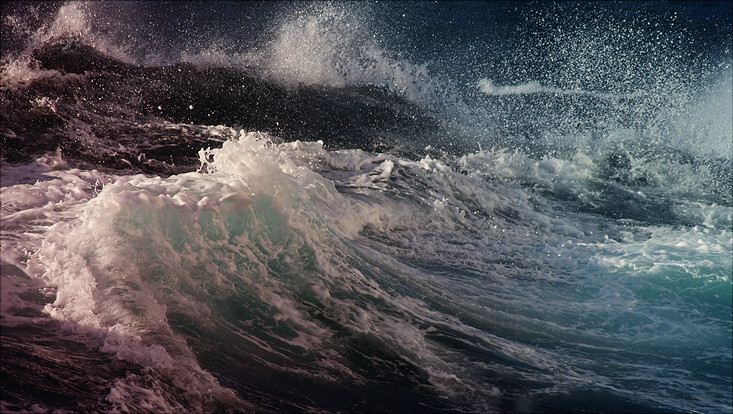The North Sea – portrayed by 300,000 data sets
25 January 2018, by Iris Hinrichs

Photo: UHH/CEN/T.Wasilewski
The North Sea is changing—not only for the worse. But even a positive trend may mean extra hours for scientists. Taking up industrial and agricultural wastewater from all across the country tributaries such as the Elbe and Weser are pushing their way into the sea.
Likewise, large quantities of car and power plant emissions pumped into the air are dissolving into the ocean. Thus, ample amounts of additional—potentially unwanted—nutrients like phosphate and nitrogen reach the North Sea contributing to overfertilization.
Luckily, ever since phosphates were banned from detergents in the 1980s, phosphorous concentrations have declined; nitrogen levels are also dropping. The European Union Water Framework Directive (WFD) as of 2000 sets limit values for both. Nonetheless, during peak times these maximums are far exceeded, for instance through land fertilization.
At the Center for Earth System Research and Sustainability (CEN) my colleague Johannes Pätsch and I share a particular interest in finding out how the North Sea will change in the future: What nutrient concentrations can be found and how will they be distributed in coastal waters and the open sea? What are the impacts of climate change and rising temperatures?
30 years ago, water used to contain substantial amounts of nitrogen
We are using a computational climate model that can provide detailed prognoses for the North Sea Region. Based on mathematical formulas it is geared to deliver simulations, as exact as possible, of the complex processes at work there. We verify our results by modeling previous time periods and comparing them with real-world data gathered at the time. The more similar the results, the better the model.
But the data set best fitting our model merely comprises measurements from the 1970s to the 1990s. It is rather ill-suited for a comparison with today, as back then the water was still full of phosphate and nitrogen. So, we needed a new data set aiming to collect and prepare all official data gathered on the North Sea Region from 1960 to date and make it available all across the world—a giant project.
Initially, I asked various oceanographic research centers for daily figure packages including times and places. These centers receive most data from research vessels, measuring buoys or coastal stations. I thus accumulated over 300,000 data sets with information on salt concentration, temperatures at various water depths, and nutrients such as phosphate, nitrogen, and silicate—all meeting different standards and quality levels.
New sewage treatment or less exhaust emissions – which approach is more effective?
From this we had to eliminate double mentions, identify freak values, and check data plausibility. We used the cleansed data to develop an interactive map of the North Sea with measured values for each month. Our map is freely accessible online through the University’s Integrated Climate Data Center (ICDC)—a treasure trove for marine biologists and climate modelers.
The new data is already helping us detect weak spots in our computational model. During simulations, for example, the phosphate value never fully drops to zero. In the sea, however, this frequently happens once all nutrients get used up in summer. We must therefore further hone our model until it gets better at simulating real conditions. As soon as it can simulate the past 30 years as targeted it will be fit for calculations into the future. Our next goal is to predict North Sea scenarios up to the year 2100.
Such prognoses are in high demand. What is the key to reducing nutrient loadings? New wastewater treatment plants? Nitrogen-free car fumes? Policymakers strive to comply with EU-prescribed limits. Our improved North Sea model helps devise useful countermeasures.
This content was first published as a guest article in the newspaper Hamburger Abendblatt on 17th January 2018.
Iris Hinrichs is an oceanographer at Universität Hamburg.
Go to whole Abendblatt-series.
Link to full new data set (North Sea Biogeochemical Climatology - NSBC)


